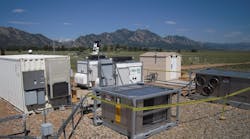ComEd is one of the growing number of utilities around the country which has sought regulatory approval and rate payer funds to develop and test microgrid pilot projects. The company’s Bronzeville project which went into service earlier this year, serves over 1000 residences, businesses, and institutions and will test a microgrid controller, solar power, and batteries operating on the grid, islanded when need be. A second phase of the project has raised a debate regarding renewables content and third-party ownership. Are we seeing a growing trend surrounding nearly always successful utility sponsored microgrid projects where advocates for renewables and independent development want to take utility ownership out of the future of microgrids?
Utility supported microgrid projects are demonstrating what almost everyone expected: microgrid projects provide a valuable alternative for critical facilities such as power system control centers, hospitals, airports, data centers, emergency management facilities, and central heating and cooling infrastructure, to name a few common examples. They offer resilience in case of outages, potentially cheaper or more complete backup than a second feeder in case of major outages, and potentially cleaner and cheaper generation than typical diesel backup generators. In addition, following several years of devastating wildfires, microgrids may be increasingly installed for emergency service use in states like California, where utilities may be required to de-energize power lines during periods of high wildfire risk.
In a recent case involving a proposal by San Diego Gas & Electric (SDG&E) for multiple battery storage backed microgrid projects as part of the company’s aggressive fire safety defense program, the California Public Utilities Commission (CPUC) blocked development of the projects because of demands for third-party participation in new storage related microgrid opportunities. This case provides an excellent example of the issues involved in the debate over utility versus third-party ownership of microgrids. SDG&E’s projects are intended to provide emergency support to public sector facilities that are critical to emergency wildfire response, including SDG&E owned infrastructure. Should a third party allowed to step into this role also be legally responsible for fire damage liability like utilities? More representative of the issues facing microgrid operators in other parts of the country is the situation where the microgrids proposed by SDG&E serve multiple utility customers and use utility infrastructure in certain operating modes. Regulators in Illinois have asked ComEd to propose a tariff that would provide payment for the use of utility infrastructure, should a third party own the microgrid.
According to Lola Infante from the Edison Electric Institute (EEI) who spoke at the Microgrid 2019 conference in May, 50% of microgrids developed today have some utility involvement compared with only 10% a few years ago. Clearly, utilities bring significant value to third-party projects as they own the distribution assets microgrids need, and can extend and maximize the benefits made possible with microgrids. While EEI’s figures indicate movement, the real numbers of utility involved microgrid projects as opposed to utility sponsored pilot projects are not that impressive. The problem is regulatory restrictions plus insurance, liability, and cybersecurity related complications stemming from utility participation in private projects. In deregulated states, regulators may prevent utility participation in microgrids involving generation, and generally, the regulatory community appears inclined to restrict utility control of microgrids beyond the pilot phase projects for “fairness” reasons.
It would not be surprising if utilities just avoided the whole microgrid issue since they are often rebuffed for wanting to make a return on such investments and may even be forced to pursue third party objectives to gain approval and cost recovery for demonstration projects. This occurs even though experience indicates that properly sited advanced microgrids can strengthen the broader grid, increase the availability of ancillary services, relieve congestion, avoid new substations and power lines, and so forth.
Of course, there is another side to this issue. Utility competitors argue utilities will dominate the microgrid market if they are permitted to develop microgrids unfettered and recover cost from all ratepayers. So, is there a solution that will allow the full potential of microgrids to be realized for all electric customers? A growing number of states are turning to legislative and regulatory proceedings to arrive at forward looking solutions. Hopefully, utilities will be long term players as part of those solutions. Make sure to weigh in with your opinion.


